IWC Schaffhausen
Leap Year
You see, the earth, when it spins on its axis, takes what we understand to be a year, to make a complete revolution around the sun. Now, you and I understand a year to be 365 days on regular years and 366 days during a leap year. This method of measuring a year — which is today most universally practiced — is what is called the Gregorian calendar.
The exact time, however — when you maintain a 24-hour day — that the earth does take to orbit the sun once is 365.25636 days, which is just roughly 365 and a quarter days. But look, it’s not going to work for anyone if we had to sing Auld Lang Syne at 6am in the morning, at which point the next time we’d clink our champagne glasses, a year on, would be at 12pm.
You get where I’m going with this. Who wants that kind of math messing up New Year parties? So, what we’ve always done — as put into practice by Julius Caesar — is to consider a year to be 365 days long with a 366-day year every four years to make up for the quarter day that we’d otherwise be losing out on. So that’s why we had an extra day in February, earlier in 2016.
But I like to think that 2016 was a leap year also because of the new understandings of reality and humanity that the world took on itself. Understandings that have given new definitions to what a family is, or the qualities that are necessary in order to become the president of the most powerful nation in the world.
When I apply those two words — leap year — in the context of the Schaffhausen-based manufacture of fine timepieces, however, what is conveyed is that 2016, for IWC, has been a year full of leaping into newer bolder territories that few other brands have dared to capitalize on in the Swiss watch industry.
First, IWC started the year off with an incredible line-up of Pilot’s watches that catered to a customer in almost every possible segment relevant to IWC. Then, there was the way in which the manufacture captured the digital and social media space. That’s not to say that IWC didn’t have a presence in the sphere previously — IWC, in fact, probably has one of the strongest presence scores in this regard — but now they’ve taken things up a notch by progressively empowering their local markets to push out their own social media identities. Why? The idea is very simple, and it’s a lesson that we at Revolution are attempting to emulate. The intention is to be globally impactful, while being locally empowered. And this is incredibly practical thinking, because it would be very difficult to grow worldwide influence without first being relevant to the needs of those who are right there in front of you.
Next, there is the announcement that IWC made earlier in November that, as of the end of the year, IWC will be retailing, or rather e-retailing, a curated selection of their timepieces through NET-A-PORTER first, and then soon after on MR PORTER. This is phenomenal news, not because brick and mortar retailing is dead, that still has its place, but the truth is that an online sales avenue must exist in order to capture the next generation of customers who are more gratified shopping from their couch than they are when out and about on Orchard Road.
Says Wei Koh, Revolution’s founder and editorial director, “Georges Kern has always been a pioneer and visionary in terms of connecting luxury watches with the world of today and tomorrow.” Of course, there is no need to just take our words of admiration at face value; the works of Mr. Kern’s hands in the past year are self-evident.
Which brings us then to ask, what’s in store for IWC in 2017? How can, and how will, Mr. Kern make the next leap forward?
Re-invention of a timeless classic
At a small gathering in Hong Kong, as part of IWC’s pre-SIHH festivities, Revolution got a sneak peek at what’s to come for the brand. To begin with, there is the collection that the brand will be focusing on in 2017: the Da Vinci.
Mind you now, despite recent sentiments, the Da Vinci was in the mid-1980s, a bestseller for IWC in Europe. Of those who were most familiar with the brand in that period, namely the collectors in Switzerland, Italy and Germany, the Da Vinci was for them the most recognizable of IWC watches. The reasons for the popularity of the watch at that time were the appeal of its classic round case shape and, no doubt, the famous 1985 Da Vinci Perpetual Calendar, developed by the incredible watchmaking mind, Kurt Klaus.
But a little extra bit of information that fewer still are aware of is that the same 1985 Da Vinci Perpetual Calendar’s feminine execution was a massively successful timepiece for IWC — the brand even goes on to call it a bestseller in its time. It is for this reason that in 2017, when the Da Vinci collection is relaunched, the two focal points for IWC will be: the 1980s Da Vinci’s round case and, more importantly, IWC’s female customer base.
The Portugieser, owing to the identity of the collection, can never accommodate a feminine-sized watch. There is, however, the Portofino, which allows a diminutive classical timepiece that makes for an everyday companion. Then earlier in 2016, the Pilot’s line received into the collection a mid-sized timepiece that offers something to women looking for a small, everyday tool-type watch.
The feminine version of the Portofino and Pilot’s watches cater perfectly to the practical side of women. However, when you bring this information into light, what becomes obvious is that IWC has now found itself room to create a product that will allow them to capture women’s hearts from a demographic that desires something more jewelry-type; something for the evening gown and cocktail soirée. And with the Da Vinci’s given heritage, there’s no better collection, and no better time than now, to leap forth into this new territory.
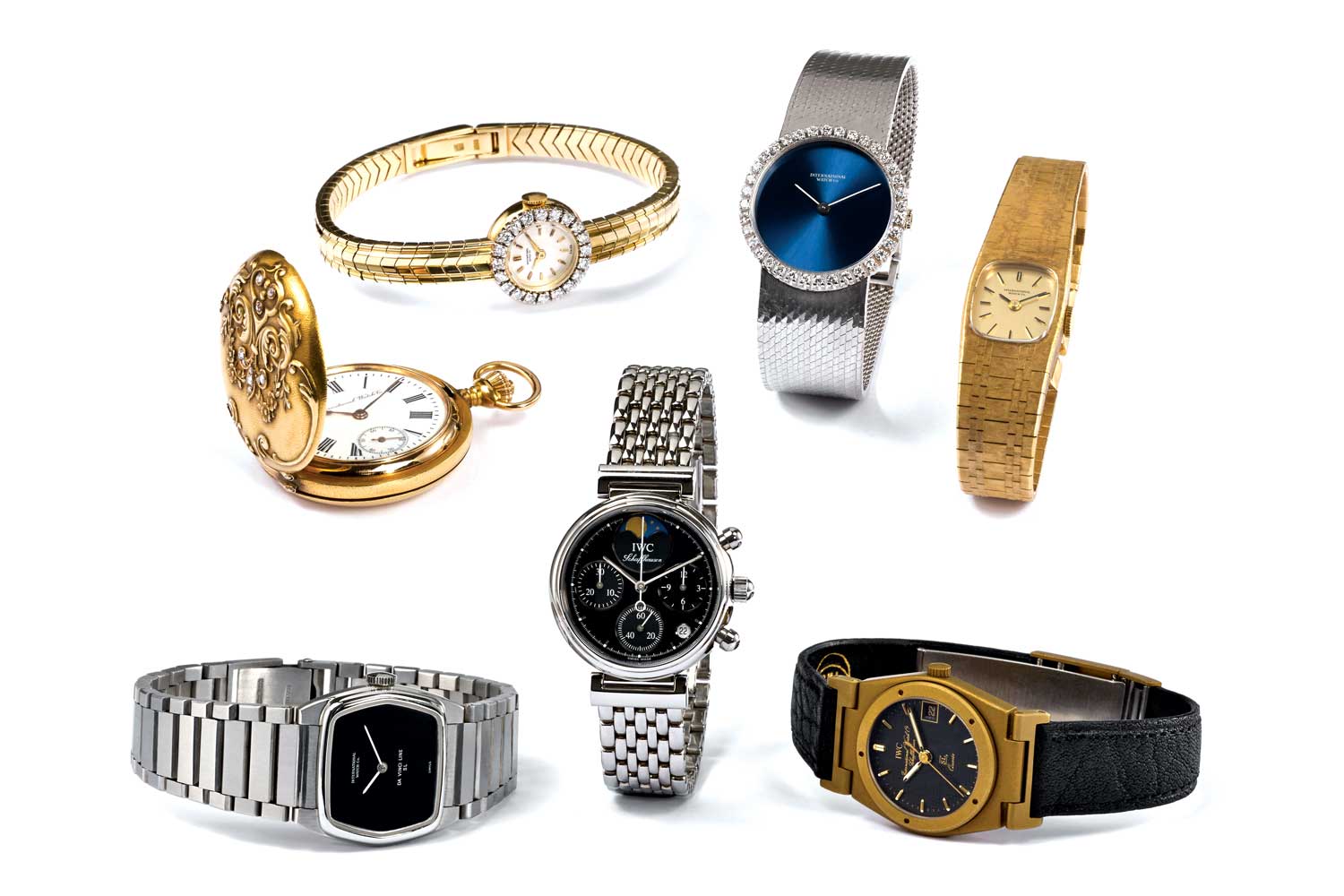
IWC is looking to explore its savoir-faire in feminine watches, and among its inspirations are these historical IWC ladies’ models: (clockwise from center) the Da Vinci Lady Chronograph, 2000; the Da Vinci Line SL, 1977; the Savonnette ladies’ pocket watch, 1909; the hand-wound ladies’ watches from 1958, 1976 and 1975; the Ingenieur-Lady SL Quartz, 1984
The first version of the Da Vinci Automatic 36 that has been introduced as part of the brand’s pre-SIHH announcements is one with a moonphase complication at 12 o’clock, while the second version bears a circular date window at six o’clock. Both versions will be offered in variations of stainless steel and red gold, with three references for the Da Vinci Automatic Moon Phase 36 and four for the Da Vinci Automatic 36.
The third and last watch that forms part of the announcement is the Da Vinci Perpetual Calendar Chronograph, which called for the monumental task of reconfiguring IWC’s existing perpetual calendar chronograph movement. The resultant movement, caliber 89630, has allowed IWC to — for the first time in its entire history — incorporate a flyback chronograph display with the perpetual calendar’s moonphase display in a subdial at 12 o’clock.
Compared to the earlier 36mm pieces, the 2017 Da Vinci Perpetual Calendar Chronograph, at 43mm wide, is in a proportion that is more common of IWC watches. But quite frankly, when on the wrist, the Da Vinci Perpetual Calendar Chronograph feels like a very reserved elegant timepiece. It doesn’t bear the presence of, say, the 46mm Big Pilot, but what it does seem to instill is a quiet sense of sophistication and confidence — qualities that are synonymous not only with gentlemen, but also the refined ladies of today.
With IWC, though, it’s arguable that case sizes have become more an instance of how large the canvas is rather than what gender the canvas is. Because it’s not just with the options of case sizes that IWC has already managed to capture the emotions of the many women who fanatically don their Portugiesers or even the larger Pilot’s watches. As a friend of mine best put it, when I queried her about her peculiar choice to wear a Big Pilot (ref. 5004) on her petite wrist, “Size does not matter.”
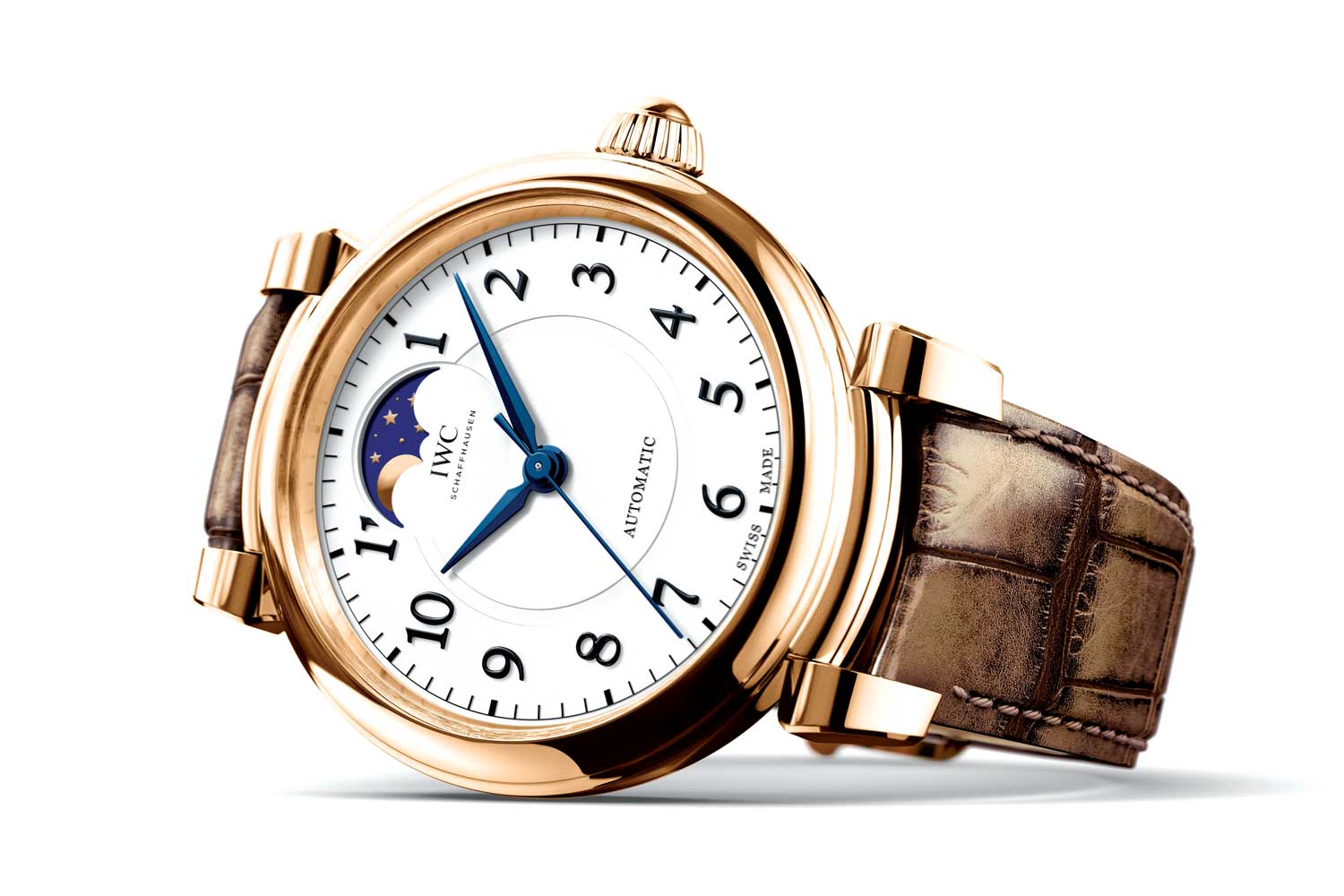
IWC Da Vinci Automatic Moon Phase 36
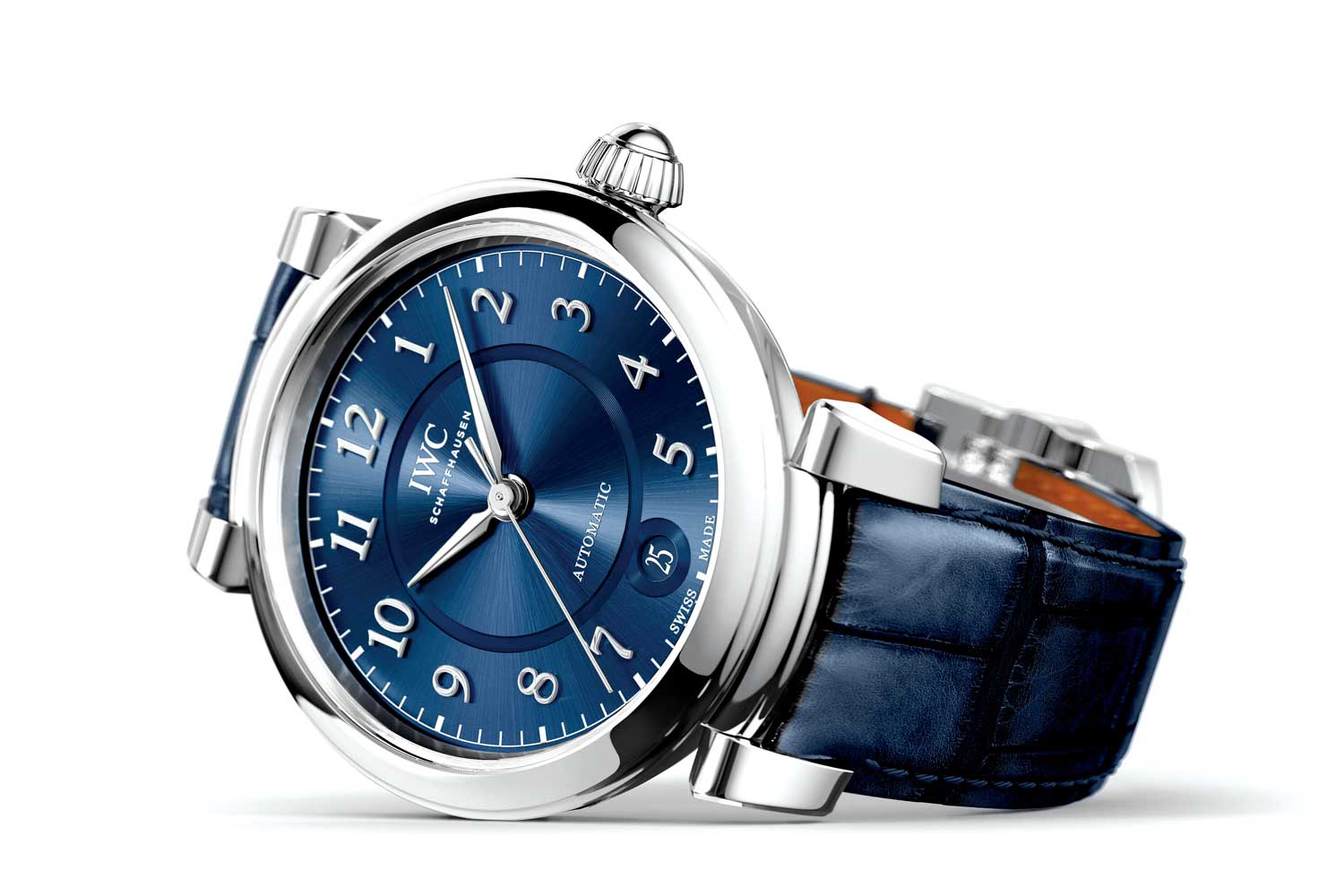
IWC Da Vinci Automatic 36
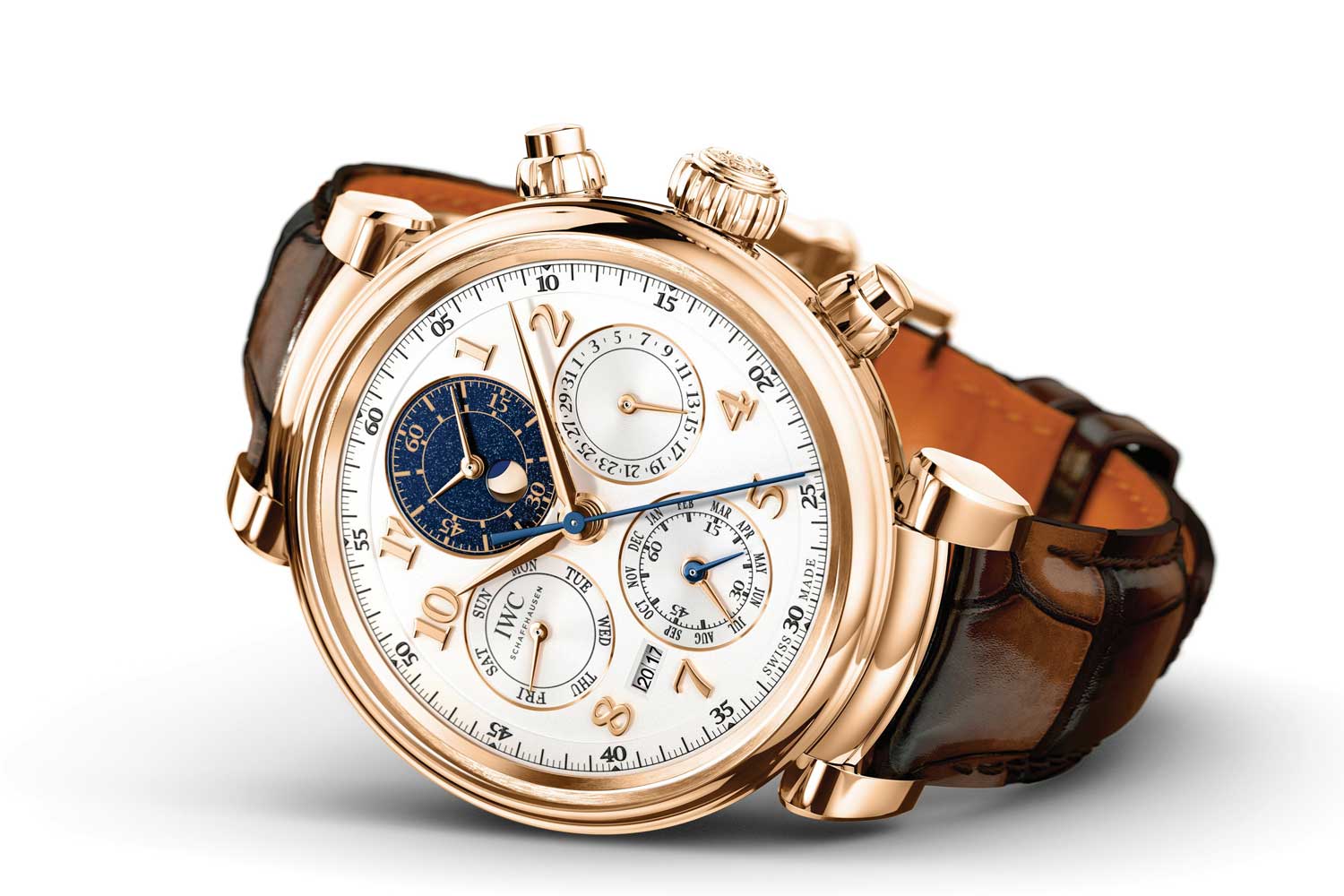
The IWC Da Vinci Perpetual Calendar Chronograph
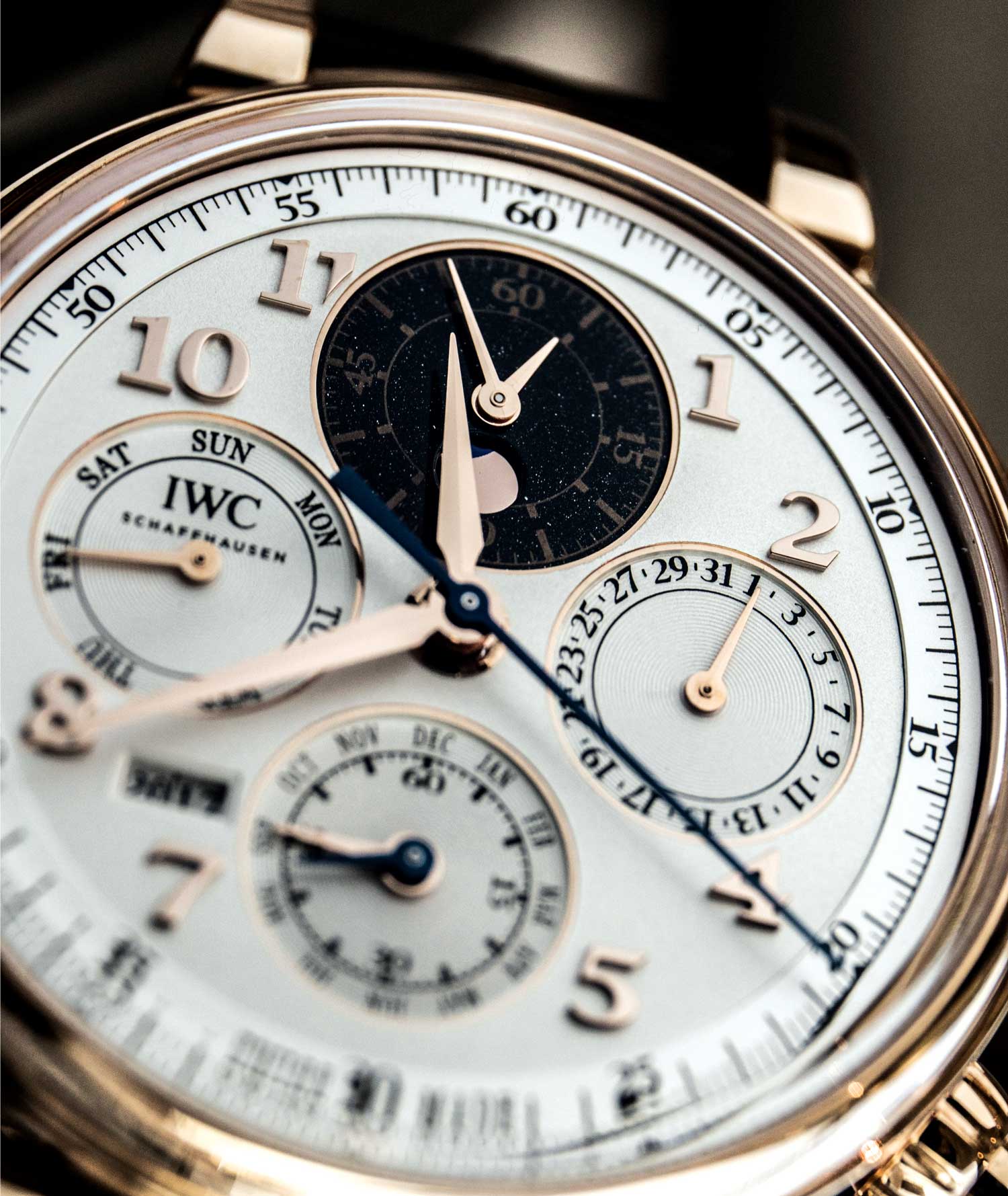
The new watch features subdials displaying the perpetual calendar, moonphase and chronograph functions in a legible fashion










